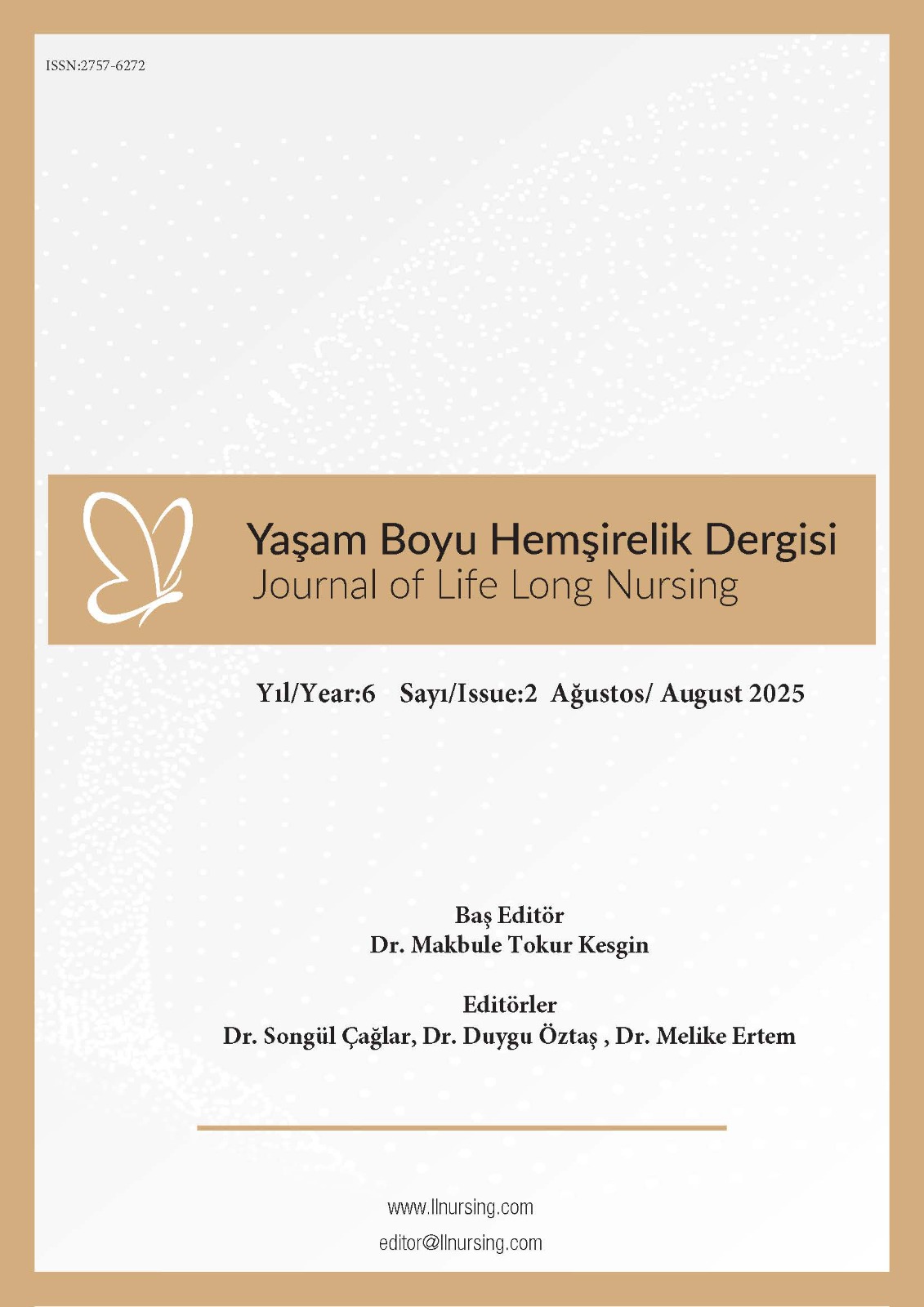Author :
Abstract
|
Amaç: Bu araştırmada, çocuk kliniklerinde çalışan hemşirelerin çalışma ortamlarını ve çalıştıkları kurumları iş güvenliği uygulamaları yönünden incelenmesi amaçlanmıştır. Yöntem: Tanımlayıcı ve kesitsel tipte tasarlanan araştırma, Akdeniz bölgesinin iki ilinde bulunan beş hastanenin çocuk kliniklerinde çalışan ve çalışmaya katılmayı kabul eden 563 hemşire ile yapılmıştır. Etik kurul ve kurum izinleri alınmıştır. Veriler, hemşirelerin tanıtıcı bilgilerini içeren form ve “Hastanede Çalışan Sağlık Personeli İçin İş Güvenliği Ölçeği” kullanılarak toplanmıştır. Verilerin analizinde tek örneklem t testi, tek yönlü anova ve tanımlayıcı istatistikler kullanılmıştır. İstatistik anlamlılık düzeyi p<0.05 olarak alınmıştır. Bulgular: Yapılan analizler sonucunda, çocuk hemşirelerinin yoğun bakım koşullarında 9 hastaya kadar bakım verdiği, hemşirelerin %66.2’sinin çalışan güvenliğini yetersiz bulduğu belirlenmiştir. Ayrıca çocuk hemşirelerinin iş güvenliği ölçeği toplam puan ortalaması (2.35±0.53) orta düzeyin altında bulunurken, sırasıyla en düşük alt grup puan ortalaması mesleki hastalıklar ve şikayetler (1.45±0.51); yöneticilerin desteği ve yaklaşımları (1.97±0.75) olduğu belirlenmiştir. Sonuç: Hemşire başına düşen hasta sayısı arttıkça, çalışan sağlığının göz ardı edildiği bulunmuştur. Ayrıca kurumdan memnun olmayan, sağlık problemi olan ve çalıştığı kurumu çalışan güvenliği açısından yetersiz değerlendiren hemşirelerin iş güvenliği uygulamalarını yetersiz değerlendirdikleri belirlenmiştir. |
Keywords
Abstract
|
Aim: The aim of this study was to examine the working environments of nurses working in pediatric clinics and the institutions in which they work in terms of occupational safety practices. Method: The descriptive and cross-sectional study was conducted with 563 nurses working in pediatric clinics of five hospitals located in two provinces of the Mediterranean region and who agreed to participate in the study. Ethics committee and institutional permissions were obtained. The data were collected by using a form containing the descriptive information of the nurses and the ‘Occupational Safety Scale for Health Personnel Working in Hospitals’. One sample t test, one-way anova and descriptive statistics were used to analyse the data. Statistical significance level was taken as p<0.05. Results: As a result of the analyses, it was determined that pediatric nurses provided care for up to 9 patients in intensive care conditions and 66.2% of the nurses found employee safety inadequate. In addition, the total mean score of the occupational safety scale (2.35±0.53) was found to be below the medium level, while the lowest subgroup mean scores were occupational diseases and complaints (1.45±0.51) and support and approaches of managers (1.97±0.75), respectively. Conclusion: It was found that as the number of patients per nurse increased, employee health was ignored. In addition, it was determined that nurses who were dissatisfied with the institution, who had health problems and who evaluated the institution inadequately in terms of employee safety evaluated occupational safety practices inadequately. |





